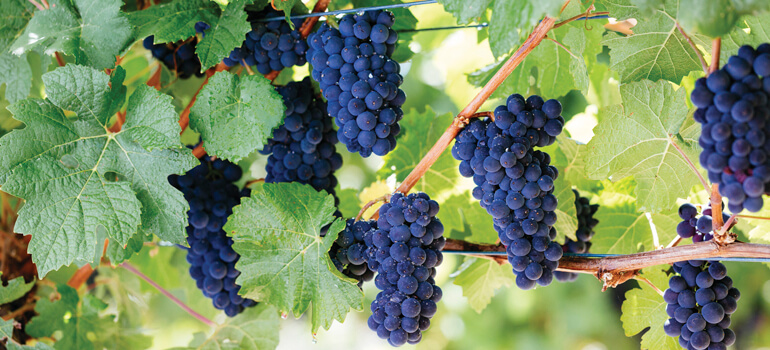When the Cudlee Creek bushfires tore through the Adelaide Hills in the summer of 2019–20, more than a third of Pinot Noir vines – totalling 235 hectares and 2000 tonnes of grape production – were destroyed.
This included key source blocks of Pinot Noir germplasm managed by Adelaide Hills Vine Improvement Inc. (AHVII), which represent the majority of Pinot Noir source blocks in Australia. The bushfire destroyed 6 out of 28 blocks, significantly reducing the supply of high-demand clonal planting material to the sector.
While potential vineyards for new source blocks were identified, there was a lack of evidence on the provenance of the clonal material, in particular for the sought-after Pinot Noir clone D4V2.

When AHVII decided to re-establish D4V2 blocks with material from the Adelaide Hills, they needed to accurately identify clonal material.
Unfortunately, most clones within a grapevine variety cannot be distinguished by their outward appearance and historical records concerning much of the preferred material were not perfect. AHVII were therefore in need of a way to positively identify grapevine clonal material from scratch.
The Australian Wine Research Institute (AWRI) had recently pioneered a method that used genome sequencing to distinguish Chardonnay clones and, using this method as a basis, a new project to genetically map Pinot Noir clones was born.

AWRI partnered with AHVII to adapt its Chardonnay clonal genetic testing framework to Pinot Noir, which allowed for “sequence-verified” material to be used in the establishment of the new AHVII source blocks.
The recently completed project – led by Chief Investigator Dr Anthony Borneman, Research Manager in Molecular Biology at the AWRI – was believed to be a world-first application of state-of-the-art whole genome sequencing for the assessment of genetic diversity in Pinot Noir grapevines.
Dr Borneman said the project had delivered a valuable genetic ‘fingerprint’ of several Pinot Noir clones important to AHVII.
“Importantly, this project explored how samples of clones from a variety of sources compared against these established genetic fingerprints,” he said.

Dr Borneman said the project was important to the wider wine sector.
“The issue of grapevine clonal identification is vital to the provision of high-confidence planting material. Grapevine clonal identity currently relies on accurate record-keeping, which can be prone to errors that are then unknowingly propagated over time.
“The provision of a clonal genetic test allows for independent quality assurance of the grapevine germplasm that underpins the Australian wine sector,” Dr Borneman said.
The project was funded by Wine Australia, a PIRSA grant obtained through the South Australian Wine Industry Development Scheme (SAWIDS), the Australian Wine Research Institute and the Adelaide Hills Vine Improvement Inc. Dr Borneman presented the work in the Fresh Science session at AWITC recently and was awarded both best viticulture presentation and best viticulturally focused poster at the conference.
